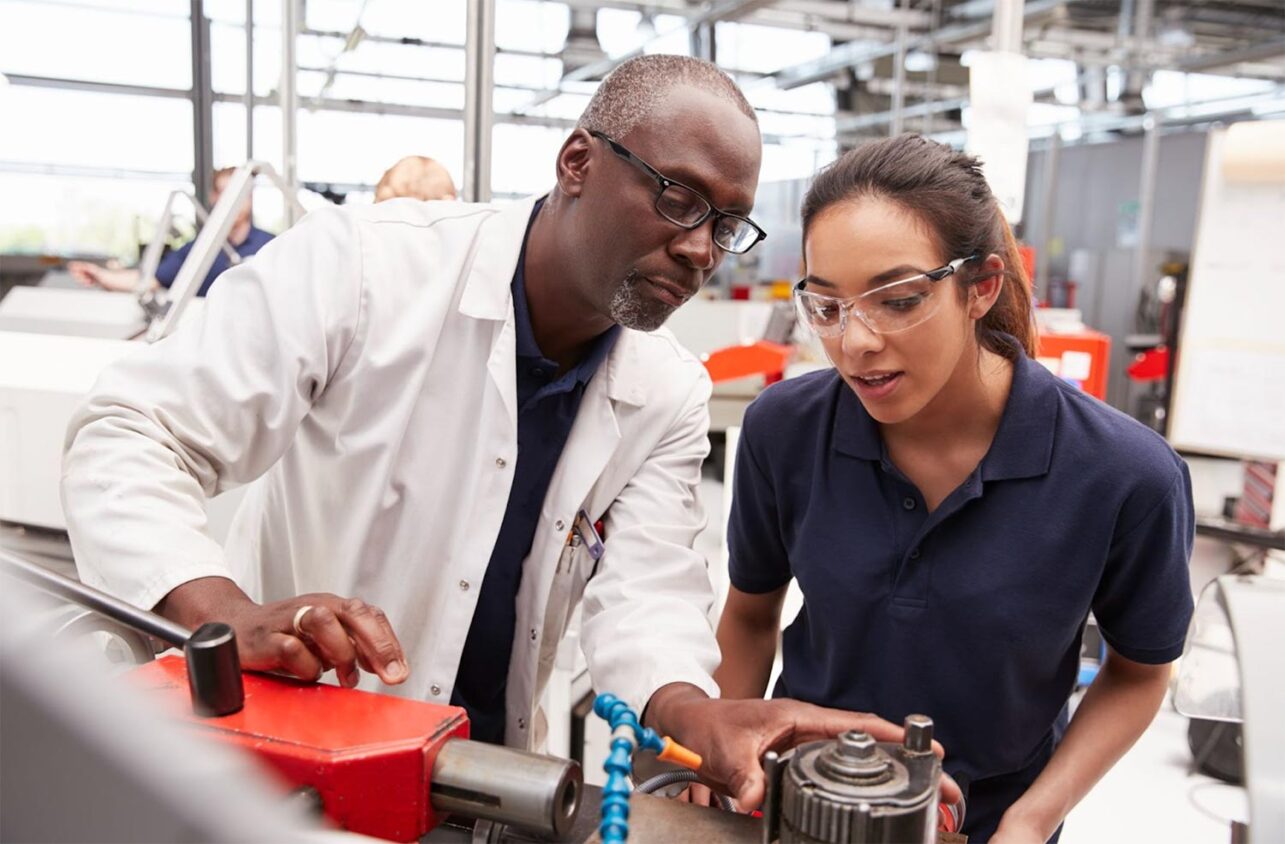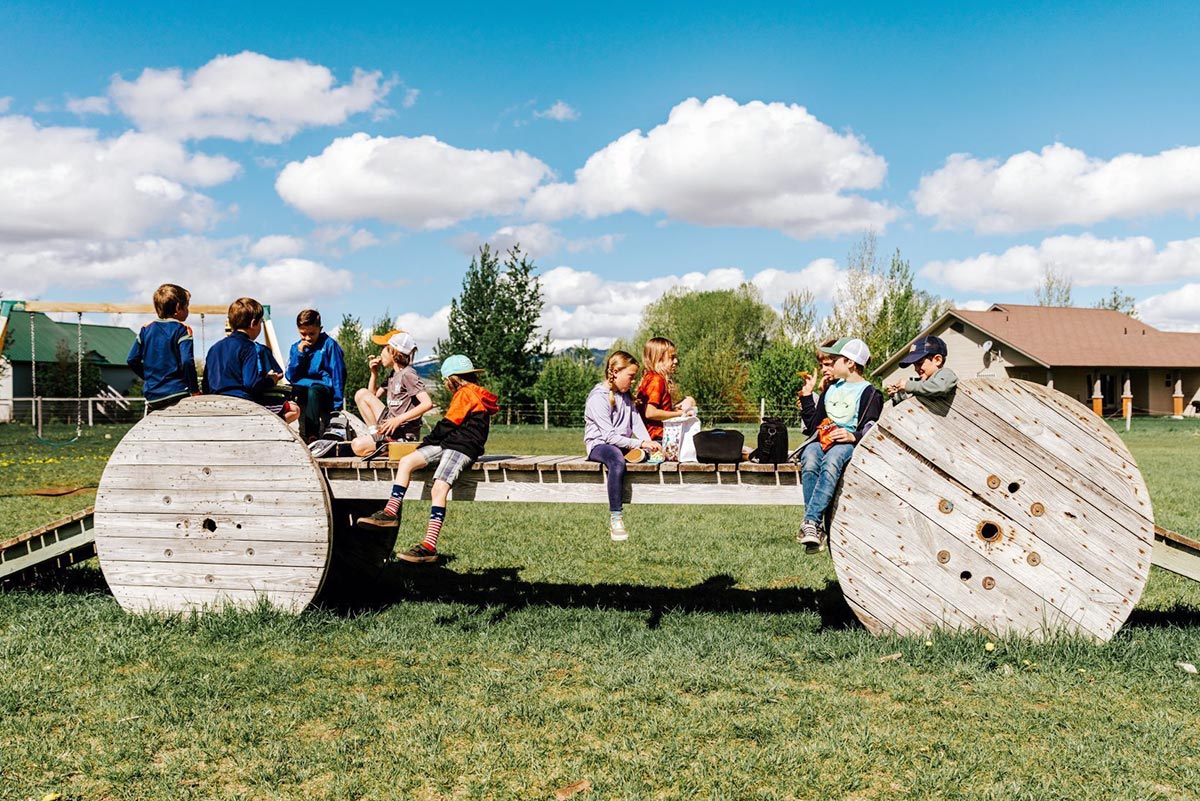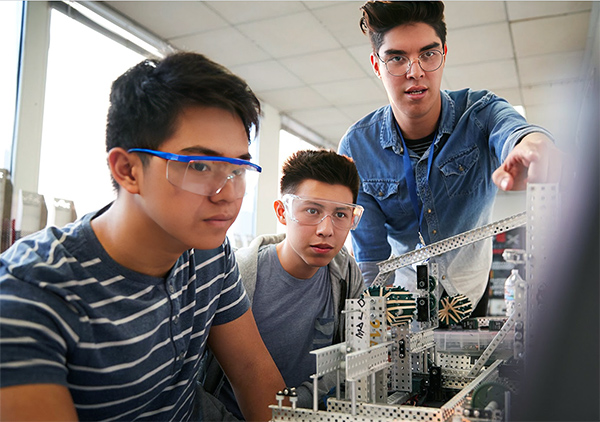The Innovative Models Exchange Deep Dive: Project Based Learning

Imagine a classroom where a teacher’s role is to guide learning versus impart knowledge, where instead of a rigid curriculum, teachers pose real-world questions, and students’ interests propel learning forward. This is the type of classroom supported by project based learning (PBL), one of several topics covered on the Innovative Models Exchange.
Students get hands-on experience tackling issues they see every day and in doing so develop skills they will use beyond the school building. It’s fueled by the students and where their inquiring minds take them.
“We want schools to think of learning and standards as being instrumental goods that help young people make sense of the world they encounter every day, inside and outside of school— the reality they are trying to make sense of every day,” says Co-CEO of New Tech Network Jim May. “So the question we want schools and educators to ask when looking at standards and designing projects is, ‘How can I design an experience around this that helps my students make sense of the world around them?’”
What are the trademarks of PBL?
Real-world contexts

PBL projects have direct relevance in the world and include opportunities for learning outside school. In Building 21’s competency-based education model, for example, students enter Studios where they work to solve a real-life problem. Whether it be about climate change or other global challenges, they are provided with an issue for which they navigate their way to a solution.
“How many times have you heard students ask you, ‘Why do I need to learn this?’ or ‘When am I ever going to use this?’ The real-life aspect of project-based/problem-based learning provides the ‘why’ for students,” says Sandra Moumoutjis, the executive director of Building 21’s Learning Innovation Network. “The design of our studios starts with a Launch that engages the students in the problem frame and previews how their learning will allow them to make an impact right now in the world for a specific audience and purpose.”

Providing students with the ability to address aspects of everyday life in turn gives them the tools to thrive when they graduate from high school—and that is an integral part of PBL.
Big Picture Learning’s model does this on a large scale by upending our ideas of traditional schooling. In their learning advisories, students can pursue internships based on their aspirations. By interacting with professionals, students gain skills (e.g., writing a professional email, working with clients) that they can take into the workforce.
Student-centered practices

PBL is centered around students’ identities and interests, and it empowers students to make key decisions. Instead of dictating what and how to learn, the teacher serves as a guide into the topic. From there, students decide how they want to engage with the task at hand. Most of the time, this means the end product isn’t clearly defined—it’s in the minds of the students to decide.
One Stone’s Living In Beta model empowers students to answer questions about who they are and where they want to go. Through self-exploration and discovery of their passions and interests, students start to think critically about what they want their purpose to be.

The open-ended design—another staple of PBL—allows students to determine their route and the end goal.
“A core goal of K-12 schooling should be to develop students as autonomous, self-assured thinkers and learners,” says Stacey Gershkovich, leader of The Robertson Center at Success Academy. “Project-based learning is a powerful strategy for cultivating these mindsets because it captures students’ imaginations and gives them choice and ownership—both of which drive engagement and independent learning.”
Interdisciplinary research
Because PBL takes a holistic, real-world inspired approach to learning, what we would deem core subjects often overlap to create an interdisciplinary way of teaching. Math, science, English, and history can be masterfully interwoven to align with students’ pursuits.

New Tech Network’s model melds classrooms together through co-teaching. It blends two or more courses to enable students to investigate multiple subjects and synthesize their learnings to create content for projects.
Success Academy employs a similar strategy. Students tackle one topic from a cross-disciplinary perspective. Through reading, learners get excited about a topic and are inspired to read more as the project progresses. “Incorporating science experiments (where relevant) and field trips (when possible) in project-based learning deepens this engagement and further collapses the false divides between subject areas and between school and life,” Gershkovich says. “They come to understand the interdisciplinary nature of knowledge, and that learning extends far beyond the walls of their classroom.”
Community
Through collaboration with their peers and people outside of the classroom, students are able to make the connection between what’s happening at school and their community.
Teton Science Schools Place Network’s place-based education model asks students to understand that place starts with self. From there, they can start to understand expanding concepts: how they relate to their school, how their school relates to their community, how their community relates to the nation, and how the nation relates to the world. Students are empowered to find community needs and work as a team to better their worlds, locally or globally.
Meanwhile, students are also building community at school. That is how Embark Education structures their spaces. Each day, students come together in their communities to share updates and set goals. It creates a shared learning experience that supports collaboration.
Which aspects of PBL vary?
- Duration: Projects can last as short or as long as needed. NuVu’s Studio Learning participates in 3- to 4-week projects within the models’ studios, while other projects can engage students for more than a semester.
- Personalization: Students can have autonomy over the whole project or only certain aspects of the project.
- Content: Based on the topic and the experience, the knowledge needed will vary. EL Education uses different experiences that feed into the skills students will need.
- Location: Instruction can take place outside or inside a traditional classroom.
- Assessment: The end products and how those are graded can be determined by the teachers. You can opt for a competency-based model or grade by rubric.
Project Based Learning Models

- Big Picture Learning
- Building 21’s Competency-Based Education
- EL Education
- Embark Education
- New Tech Network
- NuVu’s Studio Learning
- One Stone’s Living In Beta
- TSS Place Network’s Place-Based Education
- The Robertson Center at Success Academy
Explore Project-Based Learning Models and more by visiting the Innovative Models Exchange, a free, searchable database of models school communities can use to begin their design journey.
Transcend supports communities to create and spread extraordinary, equitable learning environments.

